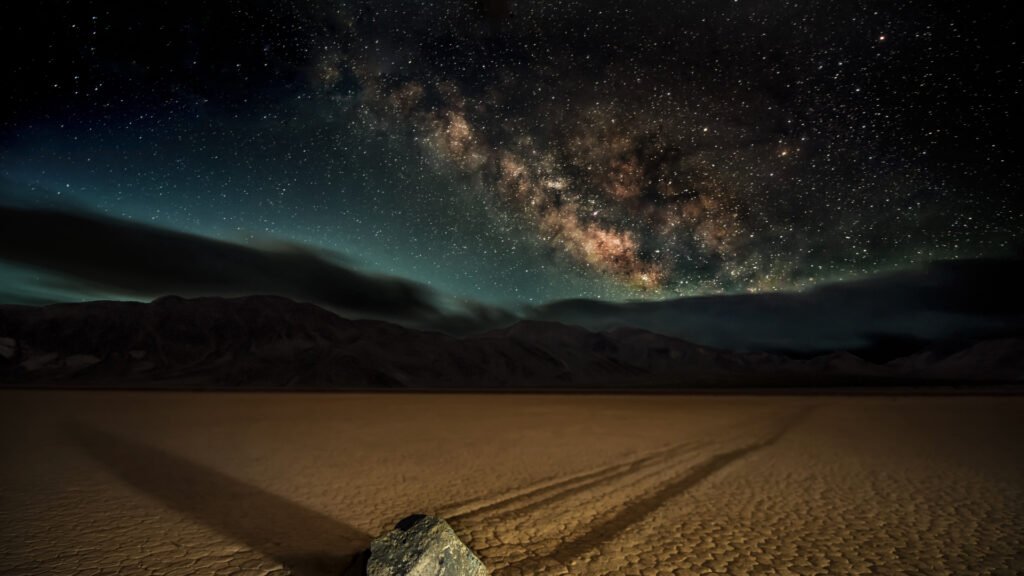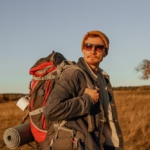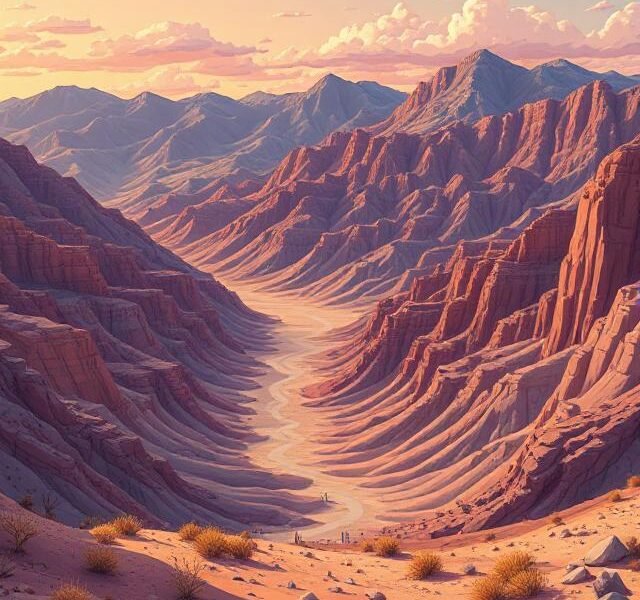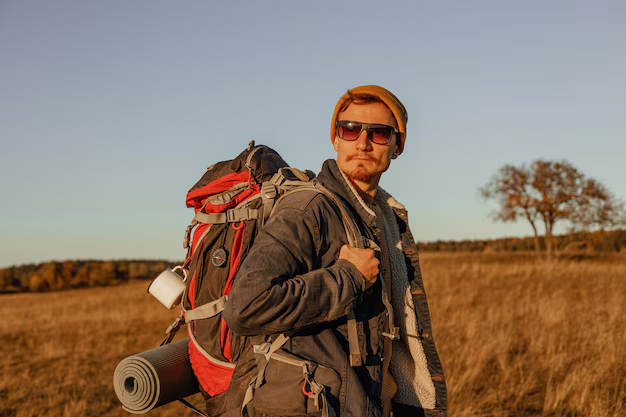Forget about ordinary vacations. Death Valley National Park is all about extremes. It holds records: North America’s hottest spot, one of the biggest US national parks, and the driest place in the country. It’s also home to Badwater Basin, sitting 282 feet below sea level. This place covers over 3 million acres.
But don’t let the name trick you – it’s far from dead. As a UNESCO biosphere reserve, Death Valley surprises with tough survivors. Think rare pupfish in salty creeks, ancient trees on high peaks, and dunes that actually sing. You’ll see amazing geology here too, from colorful volcanic craters to sculpted badlands.
Planning your visit matters. Summer heat blasts past 120°F, so stick to winter or spring. Whether you want adventurous hikes, fun family finds, incredible photos, or top-notch stargazing, this park delivers a trip you won’t forget.
Explore Geological Marvels: Nature’s Art Gallery
Badwater Basin: Walking on Earth’s Basement
Ever stood at the very bottom? Badwater Basin is that place – North America’s lowest point, sitting 282 feet below sea level. It feels like stepping onto another planet. A vast, blindingly white salt flat stretches out before you. Look closer: intricate hexagonal patterns cover the ground. These are salt polygons, nature’s own cracked-art masterpiece formed over centuries.
While you can walk right onto the crust near the parking lot, the real magic requires a bit more effort. Head further out. That short boardwalk leads to miles of open salt pan. For the best, untouched formations, consider walking about 1.8 miles onto the playa. Timing matters too.
- Hike for Pristine Views: Walk 1.8 miles out for less disturbed salt patterns.
- Best Light: Visit at sunrise for cooler temps and truly ethereal reflections on the salt.
- Unique Perspective: You’re literally standing at the lowest elevation in the entire continent.
Artist’s Palette: Desert Kaleidoscope
Artist’s Palette explodes with wild color right in the middle of Death Valley’s stark landscape. This isn’t paint – it’s pure geology. Minerals in the Black Mountains create the spectacle. Volcanic deposits give deep blues and greens. Iron rusting over time paints streaks of rich red and orange.
Manganese adds soft lavender and gold hues. It’s like Earth’s own abstract art show. You experience it along Artist’s Drive, a scenic 9-mile one-way road. Timing your visit is key.
- Drive Artist’s Drive: Find viewpoints along this 9-mile one-way route.
- Best Time: Late afternoon sunlight makes colors intensely vivid.
- Mineral Magic: Blues/greens = volcanic; Reds/oranges = iron; Lavenders/golds = manganese.
Zabriskie Point: Sunrise Symphony
Seriously, set that alarm. Zabriskie Point is the place for sunrise in Death Valley. Why? First light hits eroded badlands, setting them ablaze with gold and deep orange hues. It’s a truly iconic vista – probably one of the park’s most photographed spots. These wrinkled hills and gullies look like massive, ancient waves frozen in time.
While the viewpoint itself is easy to reach, you can dive deeper. A trail connects directly from here into the heart of this sculpted landscape.
- Essential Timing: Arrive well before sunrise to secure a spot and watch colors transform.
- Hike Further: Connect directly to Golden Canyon via the Badlands Loop Trail.
- Trail Length: The full loop exploring these badlands covers about 2.7 miles.
Ubehebe Crater: Volcanic Majesty
Ubehebe Crater hits you with raw power. It’s huge – a half-mile wide gaping hole in the earth. Forget slow lava flows; this giant formed suddenly. Steam explosions blasted it out when rising magma met groundwater long ago. Today, you stand on the rim staring down at steep, colorful walls.
Layers of sediment show shades of ochre, rust, and soft pink. Wind whips through the immense space below. You have choices here: admire it from above or get closer.
- Rim Hike: Walk the 1.5-mile trail circling the crater edge for panoramic views.
- Descend Inside: Hike down roughly 500 feet to the crater floor (steep, loose gravel).
- Geology Lesson: See evidence of that massive steam explosion everywhere.
Embrace Desert Adventures: Dunes, Canyons & Mysteries
Mesquite Flat Sand Dunes: Sahara of the West
Mesquite Flat Sand Dunes offer classic Death Valley scenery right near Stovepipe Wells. These iconic dunes feel endless, rolling like golden waves under vast desert skies. Some peaks tower up to 100 feet tall! Getting here couldn’t be simpler – just walk straight out from parking areas.
This spot shines for photographers, especially at sunrise when long shadows carve dramatic patterns across the sand. But it’s not just about pictures. Bring some extra fun.
- Easy Access: Walk directly onto dunes from parking near Stovepipe Wells.
- Dune Sledding: Grab a waxed board for thrilling slides down sandy slopes.
- Wildlife Tracking: Spot prints from beetles, lizards, or kit foxes crisscrossing the sand.
Golden Canyon & Red Cathedral: Martian Trek
Step right into a scene from another planet. Golden Canyon greets you with narrow, twisting passages surrounded by glowing golden walls. It’s an easy start for almost everyone. Got kids or want something quick? Walk just one mile into this sculpted wonder. But if adventure calls, keep going.
The trail climbs and scrambles roughly 3 miles total, ending at Red Cathedral. This dramatic formation towers above, its rock stained deep blood-red by iron minerals. Bonus for movie fans: parts of this stark landscape doubled for Star Wars’ planet Tatooine.
- Family Option: Easy 1-mile round trip into lower canyon.
- Adventurer Route: Roughly 3-mile round trip scramble up to Red Cathedral.
- Star Wars Spot: Recognize Tatooine filming locations along the way.
Racetrack Playa: Sailing Stones Enigma
Pure mystery. Racetrack Playa holds one of Death Valley’s strangest sights: rocks that seem to sail across a dried mud flat, leaving long trails behind them. For years, nobody knew how these heavy stones moved. Scientists solved it recently. Thin sheets of winter ice form under certain conditions.
When ice breaks up on a windy day, it pushes rocks across slick, wet clay. Seeing these trails feels like discovering nature’s secret. But getting here demands preparation.
- Vehicle Essential: Requires a high-clearance vehicle. Standard cars won’t make it.
- Long Drive: Allow 2-3 hours driving time each way from paved roads.
- Critical Rule: Never drive onto the playa itself. It damages the surface and is strictly prohibited. Park only in designated areas.
Eureka Dunes: California’s Tallest Sands
Head north for solitude and scale. Eureka Dunes are California’s tallest, soaring roughly 680 feet high. This remote spot feels truly wild, tucked away in the park’s northern reaches. What makes it extra special? These dunes can sing.
Under perfect conditions – typically dry sand cascading down steep slopes – you might hear a surprising low hum or deep booming sound. It’s a rare acoustic phenomenon. Camping right here adds to the adventure.
- Primitive Camping: Stay overnight at Eureka Dunes Campground (basic sites).
- Singing Sands: Listen for that unique hum when dry sand slides down steep faces.
- Protect the Dunes: No driving on dunes. Preserve this fragile landscape.
Enjoy Family-Friendly Discoveries
Salt Creek Pupfish Boardwalk
Meet Death Valley’s toughest little survivors. Salt Creek Pupfish are endangered fish uniquely adapted to extreme conditions. They thrive here, in water saltier than the ocean! A raised wooden boardwalk makes observing them simple and accessible. This easy, flat path winds right alongside their creek habitat.
Spring is prime viewing time. That’s when water levels and fish activity peak. Watch for males flashing blue colors during mating season. It’s a quiet spot highlighting desert resilience.
- Best Season: Visit in spring for highest water levels and active fish.
- Easy Access: Fully ADA-accessible boardwalk suitable for all visitors.
- Trail Length: Gentle 0.5-mile loop perfect for a short, fascinating walk.
Junior Ranger Program
Make any kid’s visit extra special. Death Valley’s Junior Ranger Program turns young explorers into park ambassadors. It’s completely free. Start at Furnace Creek Visitor Center. Rangers give out activity booklets packed with fun puzzles, games, and challenges.
Completing tasks involves observing nature, learning park history, and exploring safely. Kids even get to chat with rangers sometimes. Finishing earns them an official Death Valley Junior Ranger badge – a cool souvenir and mark of achievement. While designed for kids, curious adults often enjoy participating too.
- Get Booklets: Pick up free activity books at Furnace Creek Visitor Center.
- Activities: Complete puzzles, games, and park exploration challenges.
- Earn Reward: Finish tasks to receive an official Junior Ranger badge.
Star Wars Filming Sites
Calling all Star Wars fans! Parts of Death Valley’s stark landscape transformed into planet Tatooine for the original films. You can visit these real-world locations yourself. It’s a pretty cool way to connect with movie history while exploring the park. No guided tour is needed; just head to the spots where scenes were shot. Seeing familiar terrain up close adds another layer to your visit.
- Self-Guided Tour: Explore filming sites independently.
- Artist’s Palette: Spot areas near here used for Tatooine scenes.
- Mesquite Flat Sand Dunes: Recognize iconic dune backdrops from the films.
Feel The Night’s Magic: Death Valley After Dark

Stargazing in a Dark Sky Park
Death Valley holds official Dark Sky Park status. That means super clear night skies, packed with stars. Minimal light pollution lets the Milky Way shine brilliantly here. You won’t forget that view. Two spots stand out. Mesquite Flat Sand Dunes create striking dark shapes against the starry canvas.
Badwater Basin adds something else; its huge salt flats can subtly reflect starlight. Rangers also sometimes run special night programs.
- Prime Locations: Mesquite Dunes (silhouettes), Badwater Basin (reflective salts).
- Ranger Programs: Check schedules for guided night sky events.
- Milky Way: Experience its stunning visibility on clear nights.
Mesquite Dunes at Moonrise
Forget sunset. Try moonrise at Mesquite Flat Sand Dunes. A full moon transforms this landscape completely. Bright moonlight casts deep, dramatic shadows across rolling sands. Those familiar dune shapes become bold, undulating patterns in monochrome. It feels serene and otherworldly.
This unique light offers incredible opportunities for photographers. Capture those long, rippling shadows stretching across the sand. It’s a quieter, cooler alternative to daytime visits.
- Best Time: Aim for nights with a full or nearly full moon.
- Photography Focus: Capture dramatic undulating shadows created by moonlight.
- Experience: Enjoy cooler temperatures and peaceful solitude after dark.
Practical Guide: Survival & Sustainability
Death Valley visits need smart planning. That extreme heat is no joke – summer temps often blast past 120°F. Aim for November through March instead; average highs then are a much safer 70°F. Packing right and prepping your ride keeps you safe and helps protect this place.
- Must-Pack: Sun hat & strong sunscreen / At least 1 gallon of water per person, daily / Offline maps or GPS (zero cell service here)
- Vehicle Prep: Fill your gas tank, check that spare tire, and know road conditions before heading out.
- Protect the Park: Stick to marked trails, take all trash with you, and never approach or touch wildlife.
Conclusion: Beyond Barrenness
Don’t be fooled by the name. Death Valley pulses with unexpected life and drama. This extreme landscape reveals astonishing resilience at every turn. See it in rare pupfish thriving in salt creeks. Find it in ancient junipers clinging to volcanic peaks. Hear it in Eureka Dunes’ mysterious singing sands. What seems empty is packed with fierce, beautiful survival.
That raw, humbling power stays with you long after leaving. Remember practical steps: respect weather extremes, carry ample water, and protect fragile ecosystems. Download the NPS App before visiting. It offers offline alerts and audio tours to deepen your safe exploration. Embrace this unforgettable encounter with Earth’s extremes.






0 Comments